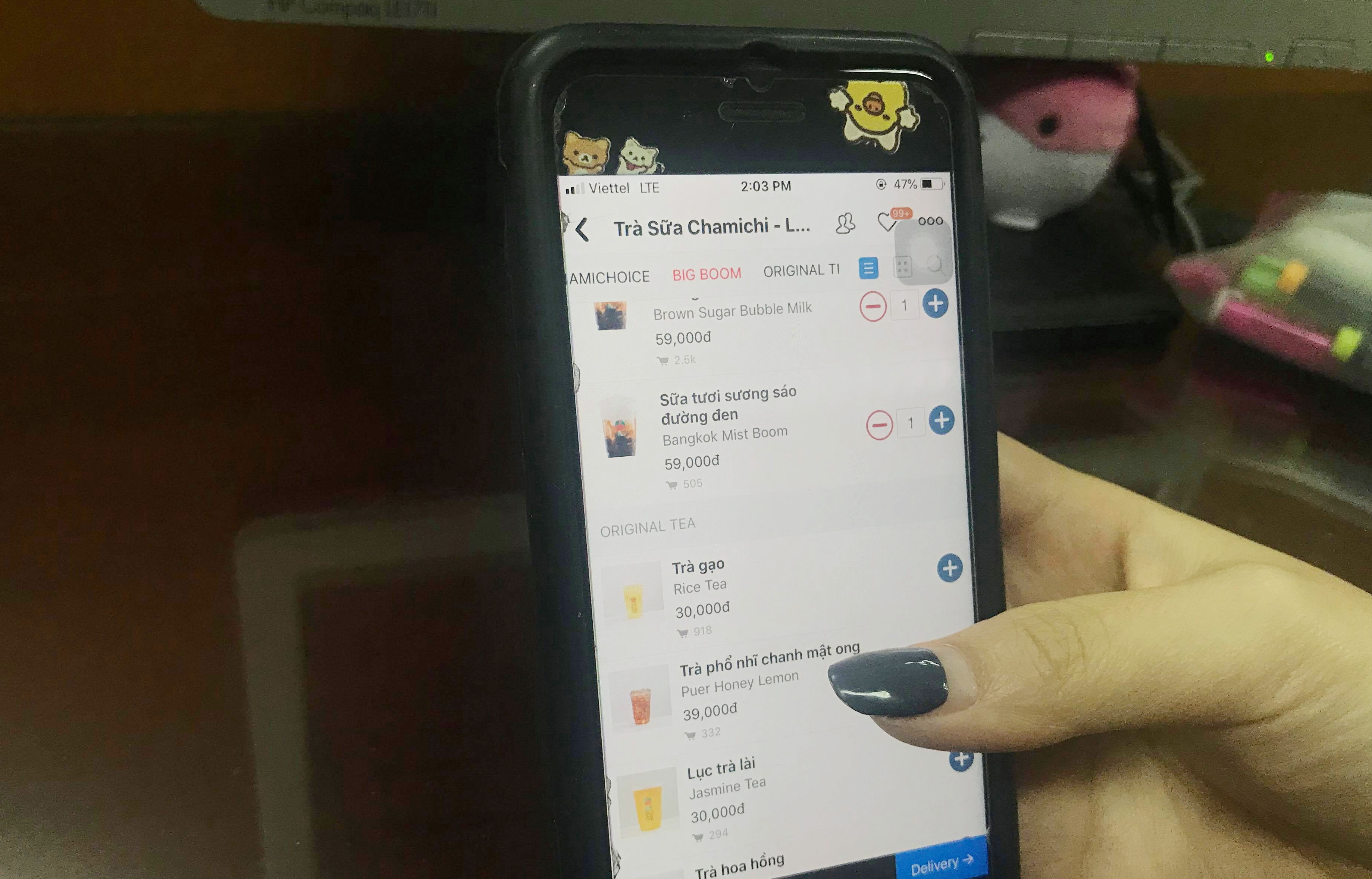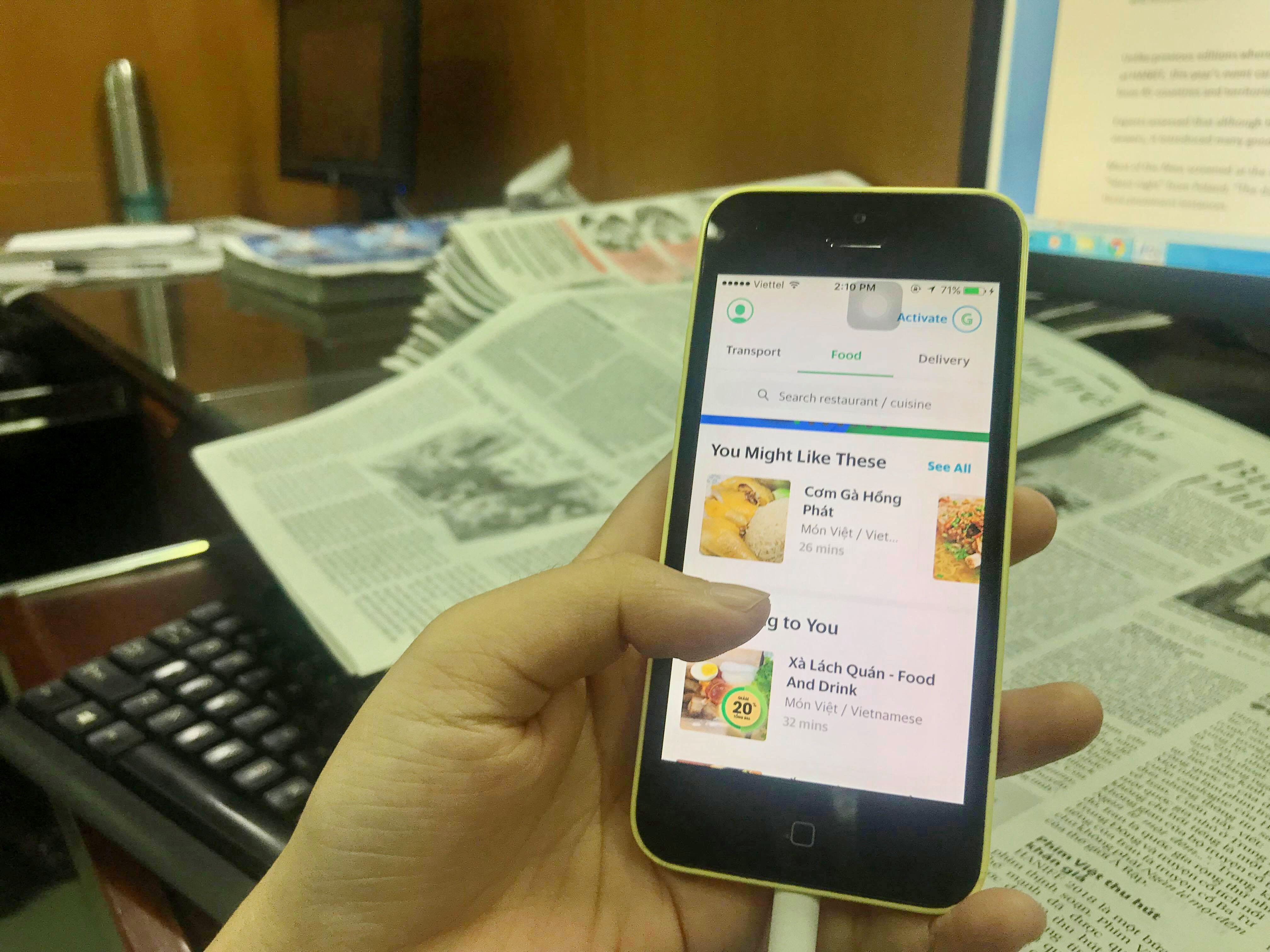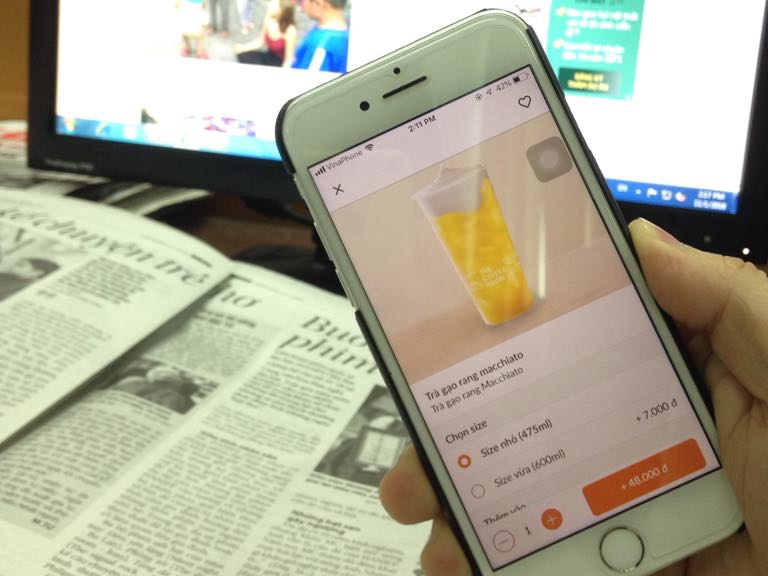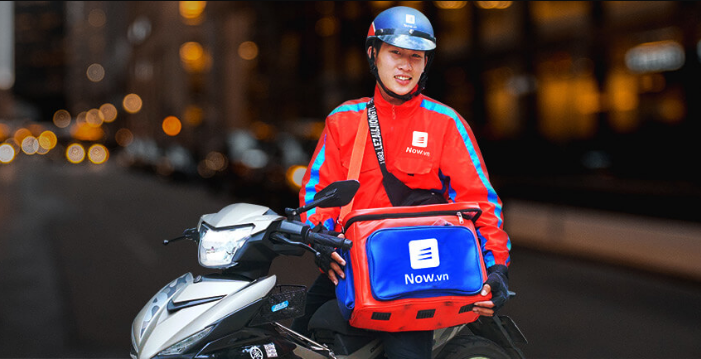In the context of the widespread application of technology in business and daily life, online food ordering is a growing industry attracting dozens of new players in Vietnam.
Ly Le, an office worker in Ho Chi Minh City’s Phu Nhuan District, told Tuoi Tre News that after every lunch break, she and her colleagues discuss whether to order milk tea and other drinks for their afternoon in the office.
It is not uncommon for office workers in Vietnamese cities to indulge themselves in snacks and drinks to wet their whistle during the tiring afternoon hours at work.
According to Le, each colleague on her team has a different food ordering app on their smartphone for this purpose.
“We each check on apps like Now, GrabFood, Lala, and Loship to see which is offering the best discount,” Le said.
Tran Anh, another office worker who resides in District 9, said that she used to call food stores directly to order snacks, without knowing shippers' information and the delivery process, but the growing popularity of online ordering apps has made huge changes to the way she and young Vietnamese in general purchase food.
 |
| A person scrolls the Now ordering app . Photo: Tuoi Tre News |
Current competitors
A food ordering app is an online intermediary between customers and restaurants, where the diners can order food online from the menus, and have it delivered directly to their addresses.
According to data by market researcher Euromonitor, the online food ordering market in Vietnam is currently projected to top US$38 million by 2020.
The now $33-million market is shared by a number of major players such as Now by Foody Corporation, GrabFood by Grab, and Lala by the on-demand delivery service Ahamove of logistics provider Scommerce.
Developed by Foody – Vietnam's largest social networking site for reviews and shares about dining venues – and officially introduced in 2016, Now, previously known as Delivery Now, has become the leading app in the market.
In July 2017, Foody's founders shared that Now received nearly 10,000 orders per day. The figure may be much bigger at present.
Now has also expanded their services to include grocery, alcoholic beverage, flower, FMCG (fast moving consumer goods), medicine, and laundry deliveries.
Meanwhile, its parent company Foody, initially founded as a website that merely helped users discover restaurants and eateries with its revenue mainly coming from advertisements, has developed an ecosystem that covers a wide range of food-related businesses – ranging from Now to online reservation platform Table Now and restaurant management software Foody POS.
A newcomer that has entered the race but immediately captured the attention of consumers is GrabFood.
GrabFood was tested in Ho Chi Minh City in May and officially launched a month later.
In early October, GrabFood was also officially present in Hanoi after less than a month of piloting.
Grab’s CEO told news website Zing.vn that the number of successful orders GrabFood completed in Ho Chi Minh City in September increased 2.3 times compared to the previous month, while the number of business partners on GrabFood in Hanoi has risen eight times only after one month of testing.
Another player that has been able to leave its mark in the bustling market is Lala.
Lala's CEO revealed that the company already has 6,000 drivers thanks to partnering with Ahamove right from the get-go.
Another notable name includes Vietnammm, which was established in 2011 as a member of Takeaway.com – a Dutch dot-com company specializing in online food ordering and home delivery.
It is not to mention Loship, a platform launched in March and owned by Lozi. The app is associated with CEO Nguyen Hoang Trung, who was named one of the 30 most prominent under-30s in Vietnam by Forbes.
 |
| A person scrolls the food ordering tab in the Grab app. Photo: Tuoi Tre News |
Former players
However, the online food ordering market has also caused many difficulties for a number of players.
Foodpanda, a global mobile food delivery marketplace headquartered in Berlin, Germany with operations in 40 countries including India, Russia, Brazil, Mexico, Singapore and others, is among the prominent former players in Vietnam.
As one of the earliest online delivery service providers in the Southeast Asian country, Foodpanda set up connections with more than 1,000 restaurants in Ho Chi Minh City and Hanoi, with a team of about 100 shippers.
The company considered Vietnam a potential market with consistent development in the online food ordering industry compared to other markets it operates in.
But in late 2015, the firm had to sell all business activities in the Vietnamese market to Vietnammm after three years of operation due to the economic crisis and cessation of financial support from investors.
At the time of Foodpanda’s withdrawal, the main players competing with Vietnammm were Eat.vn and Chonmon.vn, which were both owned by tech firm VCCorp.
Chonmon.vn was targeted at Vietnamese users while Eat.vn was a favorite of foreign customers.
However, Chonmon.vn is no longer in operation and, as of Thursday, Eat.vn’s homepage reads, “Sorry, we’re down for maintenance.”
A special case in which an online ordering app was killed before birth was Uber Eats by Uber.
According to Zing.vn, Uber Eats was set for launch in Ho Chi Minh City exactly on the day Grab took over the Dutch ride-hailing service's activities in Southeast Asia, April 8.
Therefore, Uber's online food ordering platform was never able to offer the service to Vietnamese customers.
 |
| The ordering app of The Coffee House is seen in this photo. Photo: Tuoi Tre News |
Apps by drinks and food chains
Although they have appeared in various online food ordering apps, many drinks and fast food chains still invest in their own delivery applications.
The local brand The Coffee House was quick to offer its delivery app with a commitment of 30 minutes.
Ten Ren, a Taiwanese milk tea brand that was first brought to Vietnam in 2017, is also housed in the same system as The Coffee House and uses the same delivery application as its sister company.
In the coffee and milk tea segment, Passio and Tocotoco are two brands that have introduced their apps on smartphones as well.
In the fast-food sector, chains of great names in the market such as McDonald's, KFC, and Lotteria have built their own applications, alongside traditional ordering channels through telephones and websites.
In addition to the delivery functions, the mobile applications of the aforementioned chains act as an interactive channel between the brands and consumers where customers can accumulate points, find stores, and receive information, promotions, and discount vouchers from the chains.
Like us on Facebook or follow us on Twitter to get the latest news about Vietnam!

















































